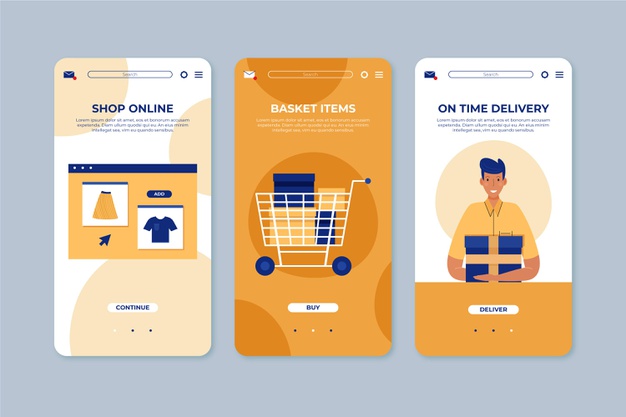In the tradition of CSI and other great TV shows, we’re going to dig deep into tissues of SEO lead generation strategies and find out what may have possibly went wrong with your own efforts, and how to solve those problems. This is troubleshooting at its finest. And the best time to create better strategies for SEO lead generation is now. Let’s start!
PROBLEM:
You are not converting traffic into leads as effectively as before
This is a common problem after a website has been online for a year or more, and there is now a marketing ecology behind the website. There are newcomers, repeat buyers, etc. In the beginning, you don’t have these yet, so it’s fine not to segment your leads as much.
But here’s the problem after one, two, or three campaigns: you now have a more complex ecology of people who know about your website, your brand, and what you are trying to offer.
At this point in time, these folks would already have different needs and behavioral tendencies. They will not respond to your emails and offers the same way as before.
The possible repeat buyers or past clients would have a different buying mood and a different set of expectations precisely because they have already made a purchase from your company. The newcomers, on the other hand, would also have specific needs that are separate from the needs of the old-timers.
Solution:
Make sure that you have an organized lead segmentation effort at the beginning of your promotions.
Create multiple categories based on lifestyle, location, gender, etc., but make sure that you are also categorizing them based on how they have interacted with your business.
Repeat buyers and old-timers should be interacted with differently, and new customers should be guided down the funnel the way you would when someone is still trying to get to know your brand better.
This way, your brand-creation efforts are going to be maximized, as well as all your efforts in genuinely engaging people so they would trust your brand more.
Getting the software you need
If you have never tried lead segmentation before as a part of your promotional strategy, you definitely need these software:
1. Customer relationship management software
CRM software is powerful for lead segmentation because it allows you to easily create and manage individual campaigns and sort your leads based on various criteria. You can even go down to the ‘molecular’ level, to the level of individual leads, and improve your segments as you learn more about your customers and buyers.
Here’s a sample campaign that you can easily manage with CRM software:
1. You provide a deal that states that the customers are getting $1,500 value for just $500.
2. You formally begin the campaign for this deal, by sending customers a FAQ or frequently asked questions email with accompanying expanded landing page with “buy now” links.
3. You allow the customers to mull over the deal for 1 day, emphasizing beforehand that it is a time-locked deal, so they have to respond fast to get the most value for their money.
4. You send another campaign, this time, a free case study about how your deal is going to boost their business’ profitability. If you want to do this, make sure that the case study is highly specific and that the information matters a lot to your leads.
5. After the case study, you try to ascertain – does the customer feel that they are getting $1,500 value from the deal?
6. If the answer is no, the automation ends.
7. If the customer agrees, the automation continues with another sequence.
***
The segment of your leads that have broken off from step 6 can be re-engaged later on with another sequence, either with the same offer (another time-locked offer, but now with an extension).
The ones who have bought into the deal will be placed in a special segment (date bound, as they had purchased) and you will be free to make an offer again to these customers later on.
2. Email marketing software

Precisely because lead segmentation is a huge feat done through the collection of valid email addresses from customers, it logically follows that you need email marketing software, too.
By combining software like Leadformly and MailChimp, you will be able to create hard-hitting web forms (single step or multi-step) and possibly increase your SEO lead generation efforts by as much as 300%.
Being able to design the right webforms (lead capture forms) is so crucial because it would be impossible to perform lead segmentation if you are not capturing a sufficient number of leads.
What is a multi-step lead capture form?
Instead of asking a series of questions all at once, you can pace your potential lead by asking one question at a time.
This reduces pressure on the side of the customer as he can fill up the information one field at a time. This also makes the lead capture form appear user-friendly and usable to potential customers.
An interactive and segmented webform can also help digital marketers by providing more engaging messages the moment the customer comes into contact with the said webforms.
PROBLEM:
Your blogs are not engaging your customers enough.
Many digital marketers use their blogs to actively market their products and services. This is completely fine until they see that the statistics are showing that their blogs are not as engaging as they would like it. The classic approach still holds to this day: you need to create content that harmonizes with what your customers need.
So people go to your website, they have needs from a company like yours, and they need to come across engaging content that makes your brand a topnotch choice for their business needs.
However, with the current landscape of high customization for user experience, you need a different kind of approach to determine what’s best for your website. It all boils  down again to customize your content based on your customer segments. So let’s take a look at the segmentation, and how to further make sense of your customers based on what we know about them.
down again to customize your content based on your customer segments. So let’s take a look at the segmentation, and how to further make sense of your customers based on what we know about them.
Solution:
Before we talk about the special segments that might help your business thrive in today’s hyper-competitive environment, let’s take a look at the role of CTAs in conversions. Now obviously, unless you make an effort that customers can respond to, you’re not going to get any data. Bare blog posts with no offers are not going to bring in those conversions. So what do we do? We add CTAs. Dynamic CTAs allow for your blog posts to be interspersed automatically with offers. The offers on the other hand, will be fed to each new piece of content based on the content’s preconfigured category.
Now, it is important to note here that what we are basically doing here is getting people into the marketing funnel, so you can send further email sequences to them for the purpose of eventually getting a conversion. We are sending them to the marketing funnel from the blog so they are already engaged to a certain level.
So if you are segmenting from the blog, what you need at this point is to make sure that they are grouped in accordance with how they have been interacting with your website as of late. The following lists should be created: single purchasers, multiple purchasers, content recommendations (multiple), sales value, expected values, reviews (whether or not a customer has submitted a review before or not), cold customers (customers that have not made a purchase at all), and finally, we have the unengaged or the customers that barely open your emails and do not visit your website frequently (even your blog).
Take note that additional factors will come into play, such as the age and location of the customers, but there should be additional focus on customer engagement as fashioned by the previous set of criteria, so you can serve the right kind of content in an ongoing fashion.
PROBLEM:
Your offers are being ignored.
This is probably the most painful of all mistakes – because it has a direct impact that may translate to months of poor sales or conversions. The problem is probably the CTA itself – the offer, so to speak, which can be a real bummer if you have already expended a lot of effort in making your offers really attractive. But as they say, there is always an opportunity to correct mistakes, and today would be a great time to make those corrections.
Solution:
Re-examine what you are offering comprehensively.
Troubleshooting CTAs on your blog or website is going to require a closer examination of the environment (the blog, for example) and the CTAs themselves. Here are some guidelines to help you get started:
1. The Skeptical Element
In classic psychology, this is called inner resistance. People have a lot of inner resistance when they are faced with unfamiliar things. Your SEO website is no different. A first time visitor will be largely unfamiliar and non-trusting. So bringing a CTA to a first time visitor may or may not work. So what do we do? We increase the level of persuasion.
Take a long, hard look at your website and ask yourself: does it look good enough to impress first-time visitors? If the answer is “not really” but you still have that belief that your services are more than what your website shows, then there’s a big problem here. Your personal perspective of your website is getting in the way of creating an effective one. What makes your website look like it’s going to drive possible skeptics away?
2. Wrong Keyword Targeting
People have been told that it’s never a good idea to focus only on competitive keywords, because the cost of PPC campaigns is going to go up, and yes, this does have an impact on how frequent people click on organic content. So how do you manage the two spaces?
We think that from the beginning, you need to get more traffic compared to what you have now. Sure, you can get some traffic from longtail keywords, but is the traffic enough to sustain your efforts?
Is the traffic enough to produce the results that you have been gunning for when you started your campaigns? If the answer is no, then you have to begin focusing on keywords that will bring in the most traffic and conversions. Do not be fearful of high traffic keywords. Focus more on these and try to get the best backlinks and establish authority with these keywords. You are going to spend on SEO and content anyway, so why not gun for highly specific keywords that you know are being typed by the people who are really looking for your services?
To get you started on the right track, take note of these top keyword software: Soovle, Ubersuggest, Serpstat, Search Term/Query Reports, Google Keywords Planner, Competitor Source Code, and Google Ads Display Planner.
By having just the right quantity of high traffic keywords, you will be setting yourself up for future success. The list of software that we recommended is a combination of free, freemium, and paid services. Try to find the one that works for you the best, to make sure that you’re going to get the results that will work on how you create content and campaigns for your website.
CONCLUSION
Much of what we do in digital marketing is investing. We invest in services, software – the architecture that will make your 24/7 storefront actually work.
If you are not investing in the right framework, if you avoid subscriptions that you actually need to make your SEO lead generation efforts, it’s going to be a tough ride. Know your markets, your customers, find the best segmentation and test, test, test. This is the only way to go. We’ll see you in the next blog post.







